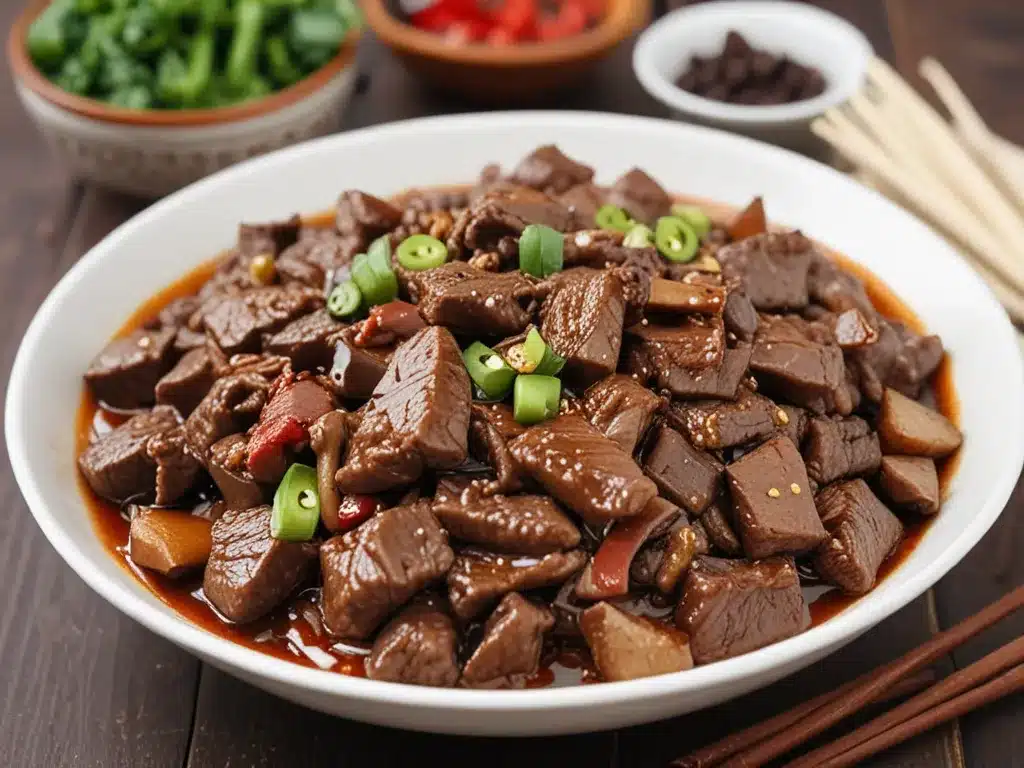
The Origins of Szechuan Beef
Szechuan beef, also known as mapo tofu, is a popular Chinese dish originating from the Sichuan province in southwestern China. The dish combines tenderly cooked beef with a complex, numbing spicy sauce containing chili oil and fermented bean pastecalled doubanjiang. Some key facts about the origins and history of Szechuan beef:
-
Szechuan cooking is renowned for its liberal use of chili peppers and preservation techniques that create bold, fiery flavors like the lip-tingling Sichuan peppercorn. Mapo tofu’s spice level epitomizes this style of cooking.
-
The dish is believed to have been created in the city of Chengdu, the capital of Sichuan province. Legend attributes its invention to a chef named Ma who cooked it to soothe his wife’s postpartum discomfort.
-
Traditionally, the dish contained tofu instead of beef as the main protein. However, beef versions became popular as the dish spread to other regions. Today, both tofu and beef variations of mapo tofu can be found throughout China and abroad.
-
While the exact origins are unclear, written records of the dish date back to late Qing Dynasty era cookbooks from the 17th-19th century. Over time, regional variations evolved while retaining the signature spicy, numbing flavors.
Preparing Authentic Szechuan Beef at Home
Preparing authentic Szechuan beef requires some specialty ingredients but yields big flavor returns. Here are the key steps I take:
-
Choosing the right cut of beef is important – I look for sirloin steak or ribeye steak cut into 1/2 inch pieces for its tender texture.
-
Doubanjiang is the star ingredient for the spicy sauce. I use a combination of whole and ground fermented broad beans for complexity.
-
Sichuan peppercorns provide the mouth-tingling sensation unique to Szechuan cooking. I dry-fry them whole before grinding to release their aromatic oils.
-
A hearty dose of chili oil made from pequin or cayenne chilies adds vibrant heat. Homemade is best but store-bought can work in a pinch.
-
Aromatics like fresh ginger and scallions give the dish brightness and freshness to cut through the richness.
-
In the wok, I quickly stir-fry the beef until just cooked through before adding the sauce ingredients. It’s important not to overcook the beef to maintain a tender texture.
-
The finished dish has a rustic, slightly clingy texture from the starch released by the sauce ingredients. I serve it alongside steamed rice to soak up every last bit of flavor.
The Growing Popularity of Szechuan Cuisine
Once a regional specialty, Szechuan cuisine is gaining fans worldwide thanks to the boldness of dishes like Szechuan beef. Some factors contributing to its rising popularity include:
-
Increased exposure through Chinese restaurants popping up in more cities internationally as well as cooking shows and online videos highlightcultural the cuisine’s bold flavors.
-
A growing interest in spicier, more adventurous global cuisines has audiences more open to tastes like Sichuan peppercorn’s numbness alongside the heat of chilies.
-
Health halos around dishes like mapo tofu that rely on fresh, minimally processed ingredients instead of fats and oils resonate with modern health-conscious eaters.
-
Ease of replicating iconic dishes at home gives diners a sense of ownership over a formerly foreign cuisine. Online recipes and availability of specialty ingredients make Szechuan cooking more accessible.
-
Pop culture like the global success of the 2017 film Let the Bullets Fly starring Chinese action star Jiang Wen boosted interest in visiting and learning about Sichuan’s landscape and food culture.
In cities with large Chinese expat and first-generation populations, Szechuan restaurants have long flourished. But now even smaller towns might have a spot serving the “kung pao” chicken and mapo tofu that make Szechuan flavors irresistible worldwide.






